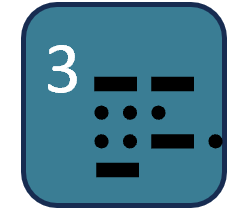This toolkit provides comprehensive resources for investigating establishment subclusters in multi-state foodborne outbreaks.
Establishment subclusters occur when multiple cases are linked to the same food service establishment, presenting a valuable opportunity to identify contaminated commercially distributed food items.
Toolkit Resources
Below you will find four documents that will help you get you started with investigating a sub-cluster.
Establishment Subcluster Key Points – Start here for a summary of the key points to detect and investigate establishment subclusters.
Establishment Subcluster Analytic Studies FAQs and Barriers – This document provides answers to frequently asked questions and barriers to conducting subcluster analytic studies.
Establishment Subcluster Checklist – For use during a subcluster investigation. To ensure you are covering all the appropriate steps.
Ingredient-Specific Analysis Guidance – Provides guidance on when to conduct an ingredient-specific analysis including:
- How to obtain ingredient information from establishments (make sure to provide this to your environmental health partners conducting the environmental assessment)
- An example scenario
Ingredient-Specific Analyses and Matrix Codebuilder Outbreak Analysis
An ingredient-specific analysis can be instrumental when investigating establishment subclusters within multistate outbreaks, as it can implicate a particular ingredient. Below is a step-by-step guide for conducting an ingredient specific analysis.

STEP ONE
Interview cases and controls with restaurant menu

STEP TWO
Gather ingredient information (i.e., build an ingredient matrix to map your menu exposures to ingredient exposures)
- Fill in a matrix
- Use this example file OR
- Get a starter matrix by entering a few items in CodeBuilder App and then download it.
- Gather ingredient data from restaurant employees, a corporate entity, etc.
- Review the ISA Guidance Document for an overview of ISA and to assist with gathering the information at the facility.

STEP THREE
Convert your menu-level exposures to ingredient-level exposures
- The MDH Ingredient Matrix CodeBuilder App can be used to generate R/SAS/Python code.
- Download the CodeBuilder Instruction Protocol

STEP FOUR
Read in outbreak exposure data and run outbreak analysis, including the ingredient-level code.
For additional support please contact the Minnesota Food Safety CoE.
